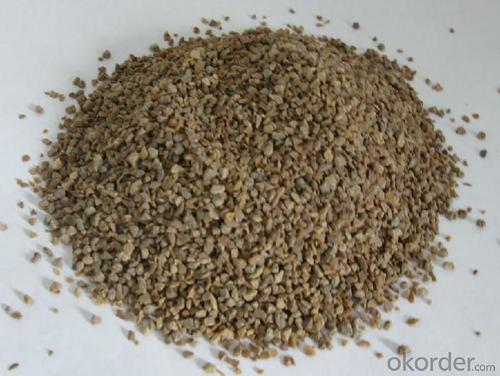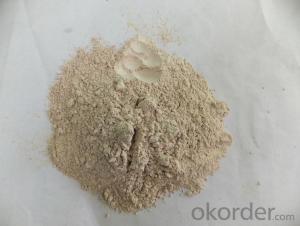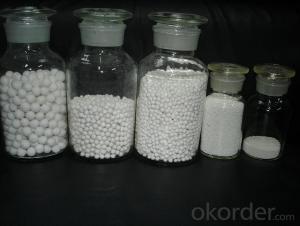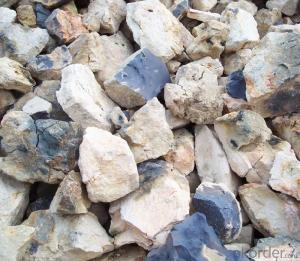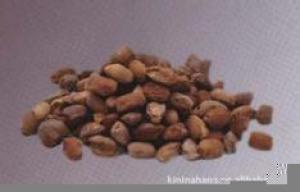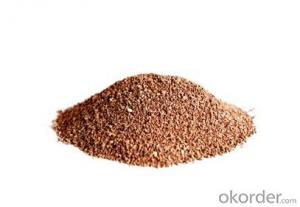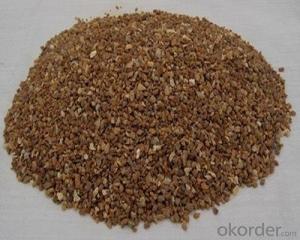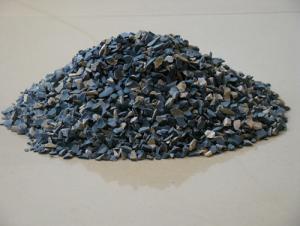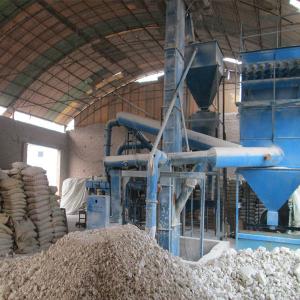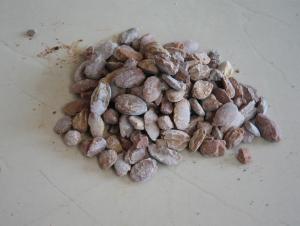Raw Materials for Refractory - Dead Burnt Magnesite Materials
- Loading Port:
- Tianjin
- Payment Terms:
- TT OR LC
- Min Order Qty:
- 20 m.t.
- Supply Capability:
- 1000 m.t./month
OKorder Service Pledge
OKorder Financial Service
You Might Also Like
Dead-burned magnesite is selected from natural magnesite, calcined temperature and the shaft kiln. It is the material of ordinary magnesia bricks, shaped and unshaped refractory products.
Specification
Application
It is used for steelmaking furnace bottom and ramming furnace.
In the same condition, using manganese or silicon to deoxidize separately, the burn out rate are 46% and 37%, but it is only 29% if using manganese alloy to deoxidize. So, it is used widely to smelting steel and its output increases faster than ferroalloy's, so has become an indispensable composite deoxidizing and alloy additives in steel industry. The silicon-manganese which contains carbon below 1.9% still is used to produce medium/low-carbon ferromanganese and semi-finished products of electro silicothermic process manganese metal.
- Q: what's the standard of fireproofing material?
- Class A1 is divided according to the combustion performance of GB8624-2006 building materials and products. Specific technical index requirements are: 1, the temperature rise ≤30 degrees;mass loss rate ≤50%; combustion duration time is 0; 2, main components, overall products, gross calorific value of external secondary components ≤2.0MJ/kg; any inner secondary component ≤1.4MJ/kg; (there are difference between homogeneous and non-homogeneous). Z802 building materials noninflammability testing furnace has to be used for testing technical indicators mentioned in test 1, using Z805 building materials combustion heat value to test technical indicators mentioned in test device 2.
- Q: I wanna ask about the building insulation materials fire rating?
- the classfication of building insulation materials fire rating: 1. The thermal insulation material of level A combustion performance: Rock wool, glass wool, foam glass, foamed ceramics, foam cement, hole-closed perlite, etc. 2. combustion performance is level B1 insulation materials: Extruded polystyrene board (XPS) after special treatment / Special treatment of polyurethane (PU), phenolic aldehyde and gelatine powder polyphenyl granule 3, combustion performance is level B2 insulation material: Molded polystyrene board (EPS), extruded polystyrene board (XPS), polyurethane (PU), polyethylene (PE), etc.
- Q: How long is the fire resistant limit for ultra thin fire retardant coating?
- According to the "code for fire protection design of tall buildings", the fire resistance time of the component is at the first level: 3 hours, beam: 2 hours, floor: 1.5 hours;if fire resistance level is level 2, the requirement for time of fire resistance component is the column: 2.5 hours, beam: 1.5 hours, floor: 1 hours. For fire resistant coating, fire resistance time for ultra-thin fire retardant coating is less than 1.5 hours. If the time exceeds 1.5 hours, thick fire resistive coating should be uesd.
- Q: which kind of refractory is used in golden smelting furnace? How about his using temperature
- generally the price of the quartz sand refractory material is higher and the temperature can meet the requirement of 2000 degree.
- Q: Which are fireproofing external wall materials?
- According to combustion performance, external wall thermal insulation materials are classified as Grade-A and Grade-B. Grade-A refers to incombustible material and Grade-B combustible material. A few years ago the fire in CCTV building and Shenyang Hotel were caused by Grade-B material. Currently Grade-A material is more commonly uesd and less expensive than Grade-B material. Grade-A material can be divided into thermal mortar, phenolic foam board, rock wool board, foam cement board, etc. Thermal mortar is easy for construction and unexpensive, but it is also easy for faking due tou its simple procesing. It is recommended to find a large factory whihc has gone through the formalities.
- Q: Is there requirement for radiation indicator in refractory?
- All refractories have no radiated harm to environment, so there is no requirement. From the elemental analysis, magnesite. I do not know it is helpful to you. But for refractory rwa material, any chemical element is radiated, including silicon?dioxide; If they are radioactive. From the use analysis, such as bauxite, do not have use value.
- Q: How to apply the alumina powder on refractories?
- What kind of the refractories can make the aluminium oxide increase the aluminum content and specific gravity, and erosion-resistant.
- Q: Which schools are the best schools in the world for learning knowledge about refractories?
- If you search on a worldwide scale, I might say you are ambitious!!! This major becomes an unpopular one and you must have to embark on graduate and PhD to specialize in it provided that you want to go abroad for further study. Wuhan University of Science and Technology may be the best school in this field with its close relatinship with many refractory manufacture factories across the country. Henan University of Science and Technology is also advisable in terms of this major, which probably promise you a job. Other universities in this regard are not quite familiar to me. You raised these questions, which shows that you are a layman to this major or not quite familiar with this major. If you have any questions, you can resort to me if I can.
- Q: What kind of materials are needed to make refractory bricks?
- Who knows what kind of materials are needed to make refractory bricks?
- Q: Who knows what fire heat preservation material are there?
- 1 thermal insulation materials with class A combustion performance Rock wool, glass wool, foam glass, ceramic foam, foamed cement, perlite and other 2. thermal insulation materials with B1 combustion performance Specially processed extruded polystyrene board (XPS) / specially processed polyurethane (PU), phenol, powder polystyrene particles. Heat-insulating material with B2 termal insulation performance Fire resistance can be thoroughly sloved by combining molded expanded polystyrene (EPS), extruded polystyrene (XPS) and polyurethane (PU), polyethylene (PE) Hairong module with glass beads (and cooperating with vitrified micro bead inventor Liu Weihua), hope my answer will help!
Send your message to us
Raw Materials for Refractory - Dead Burnt Magnesite Materials
- Loading Port:
- Tianjin
- Payment Terms:
- TT OR LC
- Min Order Qty:
- 20 m.t.
- Supply Capability:
- 1000 m.t./month
OKorder Service Pledge
OKorder Financial Service
Similar products
Hot products
Hot Searches
Related keywords

